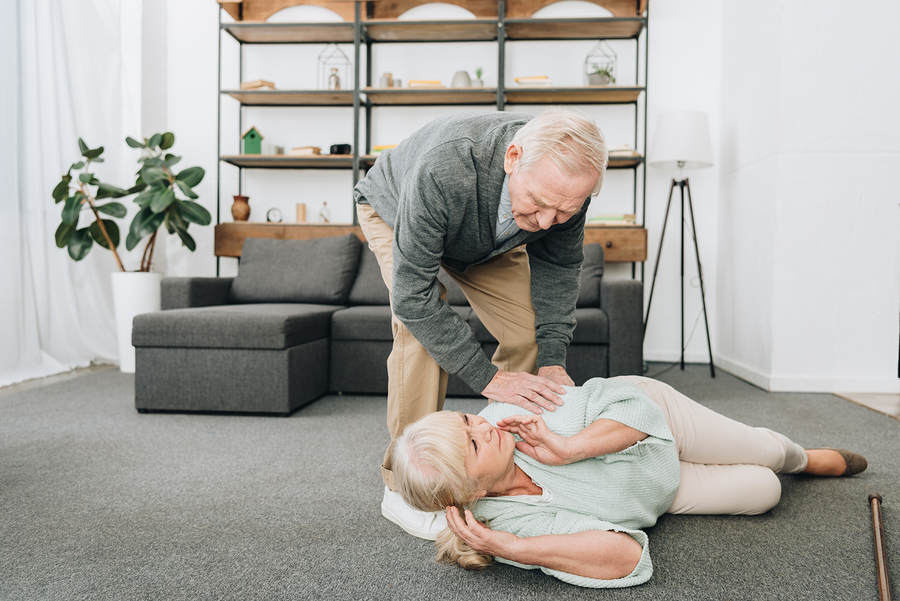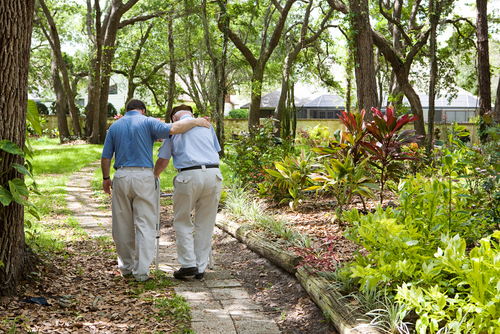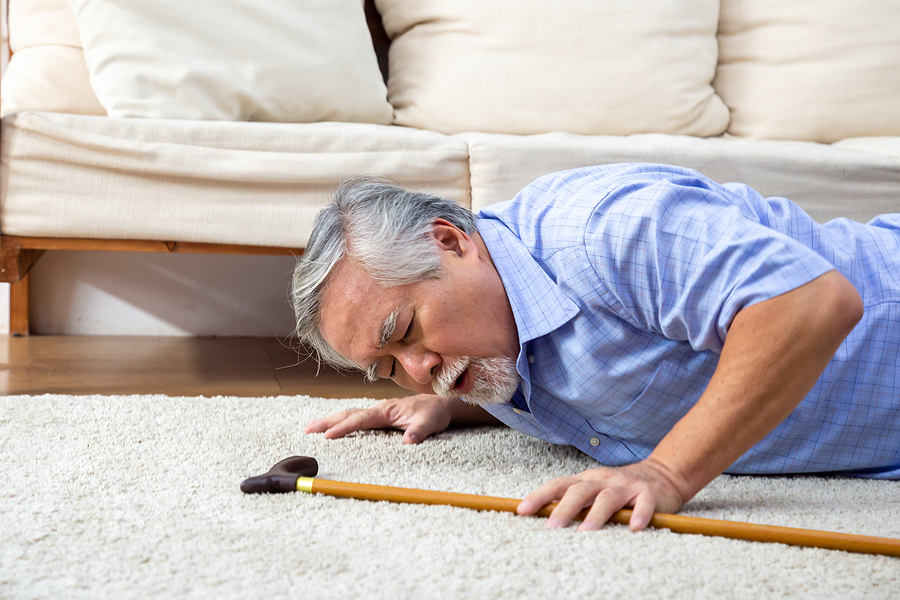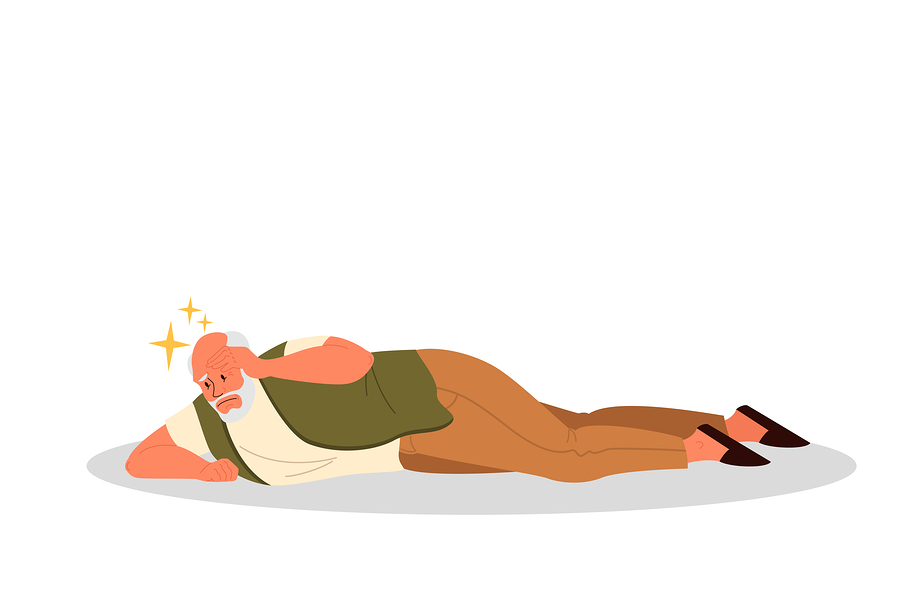Elderly Fall Prevention: Complete Action Plan
Category:

Nearly 25,000 people over age 75 died from falls in 2016. Dealing with death after a fall in elderly people can be quite distressing but luckily there are ways you can prevent such drastic incidents. In this post, we will take a look at the factors behind falls in the elderly and provide a complete action plan for prevention.
Falls in the Elderly — Statistics
Before we get into causes and prevention, let’s take a closer look at the falls in the elderly statistics. Falls are the leading causes of fatal and non-fatal injuries for adults over the age of 65. Meanwhile, the cost of falls in elderly is at an all-time high. When you look further into the numbers, the results can be distressing.
The following stats come from the Center for Disease Control:
- 20-30% of seniors who fall suffer from severe injuries such as head trauma, broken bones, and other wounds.
- 13% of older adult fall due to medicines that can cause dizziness or vertigo.
- It is estimated the average cost to treat injuries from a fall to reach around $30,000 in 2020.
Furthermore, the National Council for Aging Care discovered the following about the incidence of falls in elderly:
- Each year, 1 in 4 Americans over age 65 falls each year.
- An older adult is treated for a fall in the emergency room every 11 seconds.
- An older adult dies from a fall every 19 minutes.
Types of Falls in Elderly Adults
There are several reasons why falls can occur in elderly individuals. These types of falls in elderly adults include:
- Environmental
- Most common
- Can result from a cluttered living space or space issues with your bed
- Health-based
- Medication side effects
- Chronic conditions
- Trigger-based
- Sudden or occasional events
- Dog pulling on a leash or low blood sugar
Risk of Falls in Elderly Adults
The risk of falls in elderly individuals can depend on a number of factors, including their personal health and outside environment. Here is a look at what causes falls in the elderly:
- Vision Changes
- What does this mean?
- Prevents one from seeing items that could cause trips and falls
- Causes one to miss helpful devices such as handrails to prevent falls
- How can I help?
- Consult doctor about eye surgeries or other potential vision improvements
- Declutter home and assist loved one by pointing out hard-to-see items
- What does this mean?
- Balance Issues
- What does this mean?
- Play a part in shifting weight from one foot to the other
- Walking upstairs or tying shoes can cause issues with balance and falling in the elderly
- How can I help?
- Purchase a walking cane or stability device
- Encourage your loved one to ask for help when needed
- What does this mean?
- New Medications
- What does this mean?
- Side effects of medications are often overlooked
- Dizziness is the most common side effect to make people susceptible to falls
- How can I help?
- Ask your doctor or pharmacist about a medication’s side effects and keep them in the loop about medications your loved one is currently taking
- If dizziness is a side effect, try to limit your loved one’s movements during the time period they take the medication
- What does this mean?
- Chronic Health Conditions
- What does this mean?
- Conditions such as cardiovascular disease and Parkinson’s disease can increase one’s risk of falls
- These diseases can result in general weakness and poor judgement
- How can I help?
- Ask your loved one’s doctor to see if their ailment puts them at risk for falling
- Research the ailment and medication side effects to arm yourself with more information
- What does this mean?
- Cognitive Impairment
- What does this mean?
- Conditions such as Alzheimer’s and dementia cause postural instability and balance issues
- Head trauma can also accelerate cognitive impairment
- How can I help?
- If your loved one is unable to be self-sufficient, it is imperative to call upon a caregiver for assistance
- Explain and reiterate to the caregiver that your loved one is at increased risk of falls
- What does this mean?
- Poor Home Safety Measures
- What does this mean?
- Excessive items or electrical cords lying around
- Cluttered living space
- How can I help?
- Tape down rugs or remove them altogether
- Use non-slip bath mats and toilet-safety frames
- What does this mean?
Download Free Home Safety Guide
Healthcare systems can also utilize a fall risk assessment tool for elderly. These tools take a look at the factors that are most likely to cause falls among the elderly. Here are examples of some tools and their units of measurement of risk factors for falls in the elderly:
- Hendrich II Fall Risk Model
- Confusion, disorientation, impulsivity
- Symptomatic depression
- Altered elimination
- Dizziness, vertigo
- Male sex
- Administration of antiepileptics (or dosage changes or cessation)
- Administration of benzodiazepines
- Poor performance in the “Get-Up-and-Go” test of rising from a seated position
- Johns Hopkins Fall Risk Assessment Tool
- Patient age
- Prior fall history
- Elimination
- Medications
- Use of patient care equipment
- Mobility
- Cognition
- Morse Fall Risk Assessment Tool
- History of falling
- Secondary diagnosis
- Use of ambulatory aid
- Intravenous therapy
- Gait
- Mental status
Consequences of Falls in the Elderly
The consequences of falls in the elderly often include traumatic brain injuries. These symptoms of head trauma after fall in elderly include:
- Headache
- Nausea
- Sensitivity to light
- Memory loss
- Confusion
- Bladder incontinence
- Balance issues
The above symptoms can appear suddenly after a week or two of appearing fine. Furthermore, elderly people can experience other issues that can make an injury more severe. These include:
- Social isolation
- Decreased independence
- Decreases in strength and endurance
- Increased risk for further injuries from falling
What Should you do if an Elderly Person Falls?
We reviewed all of the causes, risks, and consequences of falls but what should you do if an elderly person falls? There are a few steps seniors can take to ensure safety.
- Before the fall
- Try practice falling in different rooms to prepare yourself for different scenarios. This can help you discover which rooms lack sturdy objects to grab onto or which are too remote to call for help. In the interest of safety, be sure to have someone nearby during your practices.
- Our natural instinct while falling is to become stiff and rigid. Instead, try to bend your knees or elbows. Also, try to land on muscle rather than bone.
- While on the ground
- Check for injuries before attempting to stand up. If you’re hurt or unable to get up, call for help. Further movement could exacerbate injuries.
- If you don’t seem to have any injuries, start by rolling from your side to your stomach and slowly pull yourself up to your hands and knees. Crawl toward a sturdy object, such as a table to support your bodyweight. While placing your weight on your hands, slide one foot forward until you’re kneeling on one knee. Then slowly rise from the floor with both your arms and legs pushing upward.
- If you’re helping someone get up from a fall, do not try to lift their weight. Instead, keep them steady and provide towels, pillows, or other comfortable items to support their joints.
- After the fall
- Seek help if unable to get up.
- Seek out a warm location and reach for a blanket or warm clothing to keep warm. People who fall can be at risk for hypothermia.
- If heat is not a concern, keep moving. Staying in one spot can cause your body to become sore and stiff, causing skin damage.
Of course, you probably want to avoid these falls from happening altogether and we will review those steps in the next section.
How to Prevent Falls in Elderly Adults
Now that we know more about falls and the elderly, let’s take a look at how to prevent falls in elderly adults. Elderly fall prevention can include steps such as modifying stairways, performing light housekeeping, or removing hazards. Here is a look at steps you can take:
- Get a check-up
- Get your vision and hearing checked to see if they can impact coordination.
- Bring your medical prescriptions with you and ask your doctor if any of them can increase your risk of falls. Furthermore, ask for fall-prevention strategies.
- Stay active and healthy
- Participate in low-impact exercises to keep your balance, reflexes, muscles, and bones sharp.
- Eat foods rich in calcium and Vitamin D to prevent bone loss and to decrease risk of bone fractures.
- Remove all tripping hazards from each room
- Check for electrical cords, slippery surfaces, and/or loose floorboards.
- Rearrange high shelves, provide nearby step stools, and perform other necessary tasks to prevent falls.
- Lighten up
- Brighten up dark areas and provide nightlights for seniors with limited vision.
- Keep flashlights on nightstands and in kitchen drawers.
- Use assistive devices
- If a doctor recommends a cane, use it.
- Install grab bars, handrails, non-slip stair treads, and other devices to ensure safety.
For even more information, you can consult our handy fall prevention in the elderly checklist to ensure you don’t miss a single step. You can also refer to these home safety tips or this useful infographic for you to print out at your leisure.
Subscribe
Date: January 7, 2020
Category:


